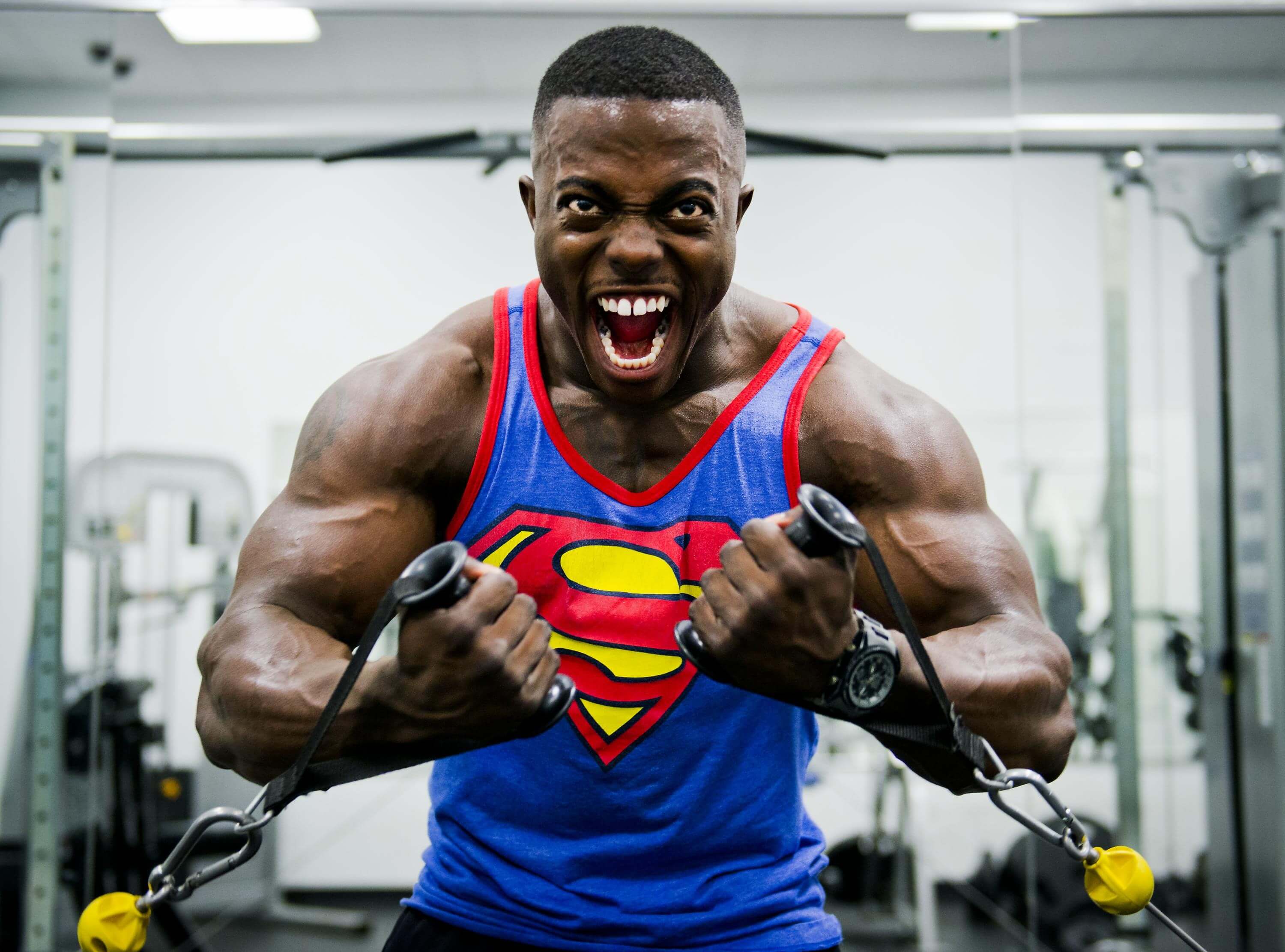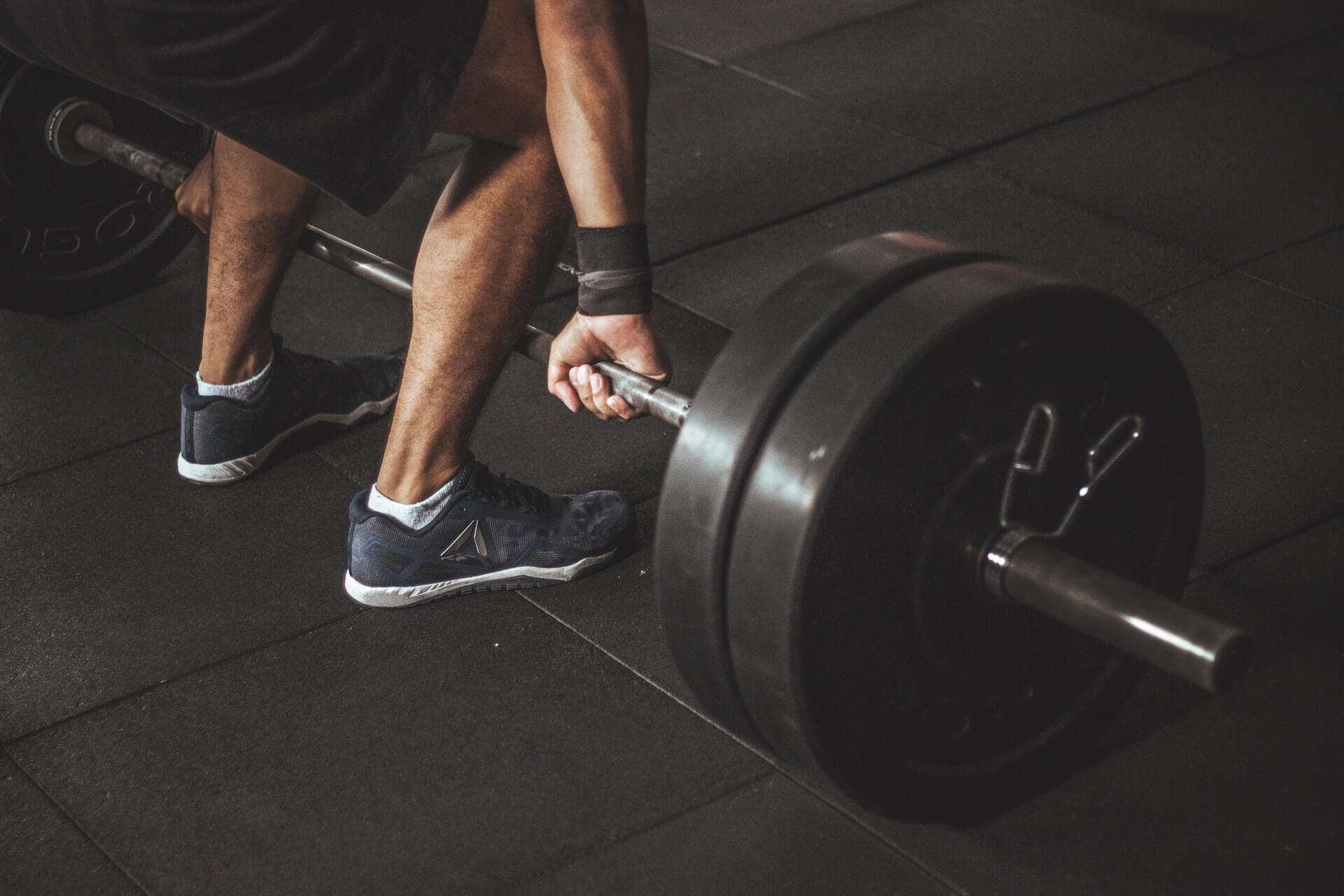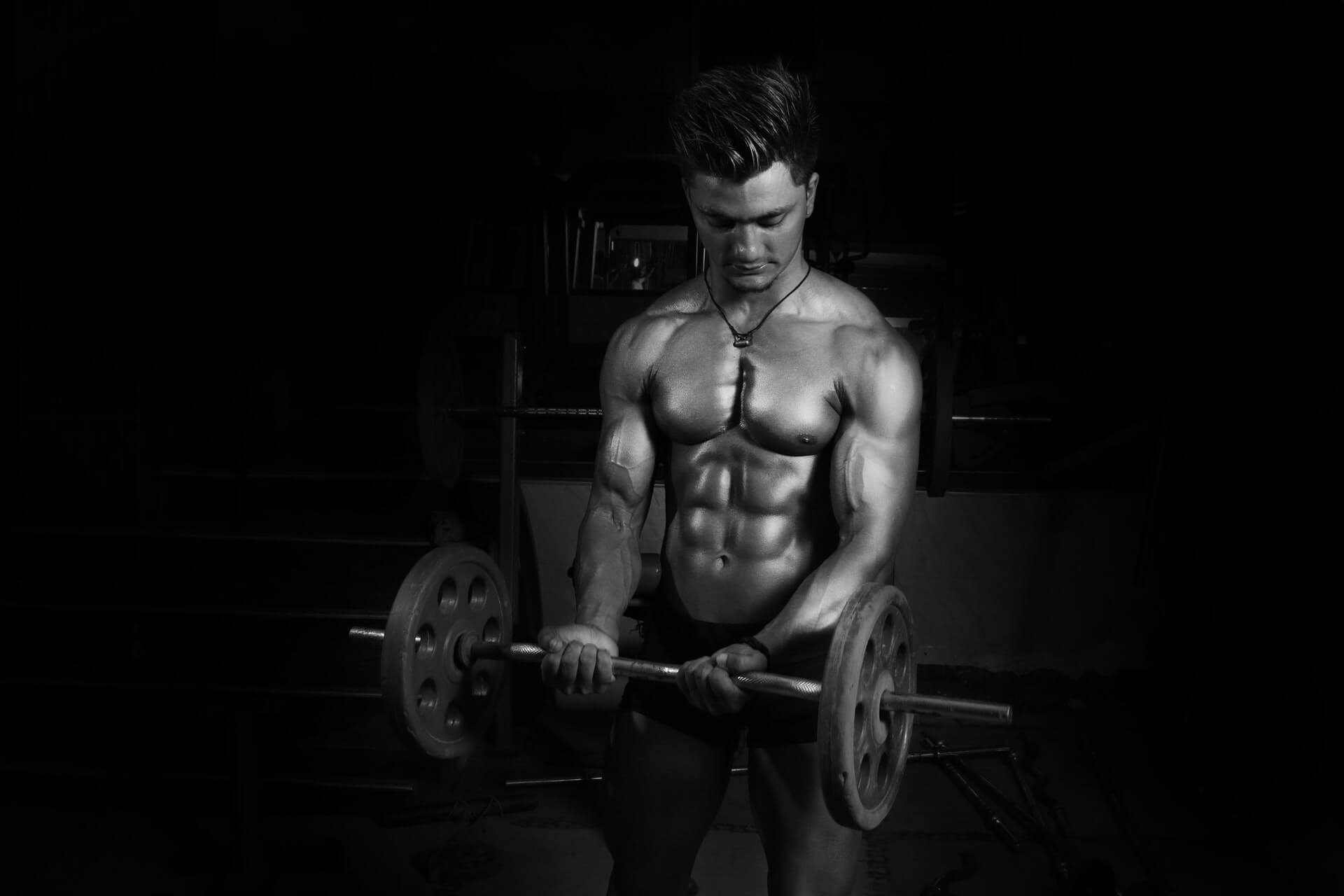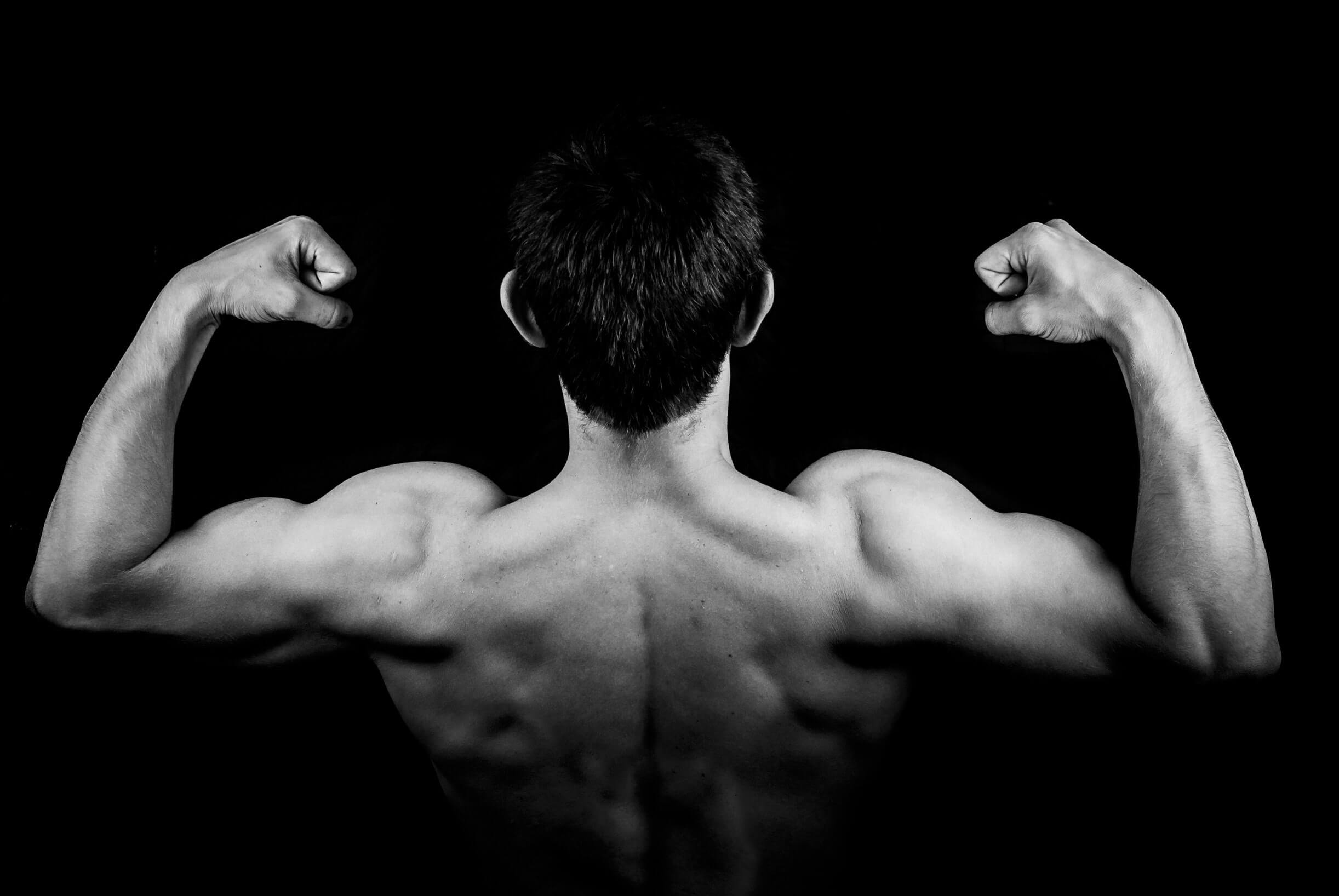When It Comes to Muscles, Bigger Isn’t Always Better

You might assume that someone with big muscles must be very strong and conversely, that someone with small muscles must be weak. That might be true in some cases but not always. But why is that? Shouldn’t a big muscle equal more strength and a smaller muscle means less? Not necessarily according to the International Sports Sciences Association, which notes that improving muscle strength and improving muscle size are two different things.
Different Types of Muscles
There are two different types of muscles and, as a runner, you are probably familiar with both. Slow-twitch or Type I muscles are used for submaximal, endurance activities and fast-twitch or Type II muscles are critical for short intense workouts. Slow-twitch muscles have a higher aerobic capacity and therefore are used first and most often during exercise. As your need for speed or duration increases, your fast-twitch muscles are put to use. Work requiring maximum efforts use both slow- and fast-twitch muscles simultaneously. Slow-twitch muscles are smaller and less powerful than fast-twitch muscles and have less potential for growth.

In a specific muscle, the amount of slow-twitch fibers versus fast-twitch fibers is based on genetics. Although a few muscles in the average person are dominated by either slow- or fast-twitch muscles, the majority of muscles are pretty much equally divided between slow- and fast-twitch muscles.
How Do Muscles Get Stronger?
Muscles get stronger by gaining some mass and by increasing the number of neurological patterns in the muscle fiber. Although there is a relationship between mass and strength, movement also is powered by recruitment patterns in the nervous system that connect to muscle fibers. More strength is generated in muscles when more muscles fibers are engaged and used.
A weight-lifting routine continually establishes new patterns of communication among the brain, nerves, neuromuscular junctions and muscle fibers. Every time the muscle is engaged during weightlifting, new neuromuscular patterns are created and the muscle gets stronger.

There also are certain factors that impact how much strength a muscle can gain, in addition to the type of muscle (slow- or fast-twitch).
- Age: Although muscles can be strengthened at any age, athletes between the ages of 10 and 20 realize the most gains in muscle strength simply because this is the time of greatest growth and development. Once physical maturity is reached, gains in muscle strength are slower to obtain.
- Gender: Although gender doesn’t impact the quality of the muscle, it does impact the quantity. In general, men have more muscle tissue than women because muscle size is increased by testosterone, the male sex hormone. And some weightlifters artifically increase their testosterone levels by taking testosterone boosters.
- Limb and muscle length: Those who have short arms and legs tend to be able to lift more weight because short limbs offer greater leverage. In addition, those with longer muscles have greater potential for developing stronger muscles than do those with short muscles.
- Tendon insertion point: The location at which the muscle’s tendon attaches to the bone also impacts muscle strength. Certain locations, such as one farther from the elbow joint rather than closer to it, can offer the athlete a biomechanical advantage to lifting greater weight.
Practically speaking though, muscle strength increases when more weight is lifted, for fewer repetitions, with greater rest between each lift. Lifting heavier weights engages both slow- and fast-twitch muscle fibers, which results in a gain in strength over time. Chances are that if you are lifting heavier weights, you generally can complete only a few repetitions. When lifting at your max, the neuromuscular system needs to completely recover between each rep so that it can again recruit both slow- and fast-twitch muscle fibers.
How Do Muscles Get Bigger?
Muscles gain mass by a totally different mechanism than the one used for strength gains. So if you follow the plan above and use heavy weights for fewer reps, you aren’t likely to see a great increase in muscle size.

During strength training, microtears—microscopic damage—occur in the muscles. These microtears kick-start the body’s repair mechanism, sending nutrients to the muscles to help repair the damage and to accelerate the growth of small protein filaments (myofibrils) within the muscle fiber. This increase in myofibrils is what causes the muscle to grow.
Lifting heavier weights for more repetitions increases the number of microtears in the muscle and, in turn, increases muscle size. The other important difference between training for size versus strength is the length of the recovery period between repetitions. The suggested recovery is 30 to 90 seconds, which studies have shown leads to a rise in growth hormone circulating in the blood. Not surprisingly, growth hormone is critical to muscle size gain.
Who Says Bigger Isn’t Better?
Researchers at Manchester Metropolitan University discovered in a 2015 study that muscle from bodybuilders produces less force than muscle from those who don’t train with weights. Although individual muscle fibers from bodybuilders were extremely large, when researchers tested the muscle cells of the bodybuilders, they found that they produce less force per gram than the muscle cells from those who didn’t weight train.
Strength may have to do more with the quality of the muscle rather than its size. Lead researcher Professor Hans Degens noted that “It appears that excessive muscle growth may have detrimental effects on the quality of the muscle, and one may well be better off with normal-sized muscles than with metabolically expensive large muscles.”

Study participants included 12 male bodybuilders, 6 “power” athletes such as sprinters and 14 physically active men who didn’t weight train. Muscle samples from the participants’ thighs were studied during the contraction of the muscle, measuring the speed and the force. From this data, the muscle quality could be determined.
And although the researchers confirmed that the muscles of bodybuilders are extraordinarily large and can generate a force greater than those of non-body builders, they were surprised to find that a gram of muscle from bodybuilders produced less force than a gram of muscle from non-body builders, leading them to conclude the quality of muscle in the bodybuilders was less.
“In power athletes, however, the muscle quality was improved. The training method seems to have an impact on muscle quality, which is of great importance for trainers and coaches interested in improving either performance or appearance of athletes,” explained Degens.
Results of the study assert that high-intensity, low-volume resistance training coupled with aerobic exercise, like that performed by power athletes, is more beneficial to developing maximum power versus the training undertaken by bodybuilders.
Sources
- , How Muscles Work and How They Respond to Resistance Training, web site
- , Factors Affecting Muscular Strength, web site
- , Bigger Muscles or Stronger Muscles,
- , Exercise Physiology, book
Latest Articles
 Is Running on a Treadmill Easier Than Running Outside?Runners have their own preferences, whether it is treadmill running, running outside on the road, or exploring trails. So...
Is Running on a Treadmill Easier Than Running Outside?Runners have their own preferences, whether it is treadmill running, running outside on the road, or exploring trails. So... Is It OK to Use Trail Running Shoes on the Road?While trail running shoes can be used on roads, especially in situations where a runner encounters mixed terrains or pref...
Is It OK to Use Trail Running Shoes on the Road?While trail running shoes can be used on roads, especially in situations where a runner encounters mixed terrains or pref... How to Fix Sore Quads After Running?Rest, ice, gentle stretching, and over-the-counter pain relievers can help soothe sore quads after running. Also, ensure ...
How to Fix Sore Quads After Running?Rest, ice, gentle stretching, and over-the-counter pain relievers can help soothe sore quads after running. Also, ensure ... 10 Fruits With The Most Electrolytes to Replace Sports DrinksThese fruits are high in electrolytes such as potassium, magnesium, and calcium, essential for hydration, muscle function...
10 Fruits With The Most Electrolytes to Replace Sports DrinksThese fruits are high in electrolytes such as potassium, magnesium, and calcium, essential for hydration, muscle function...

